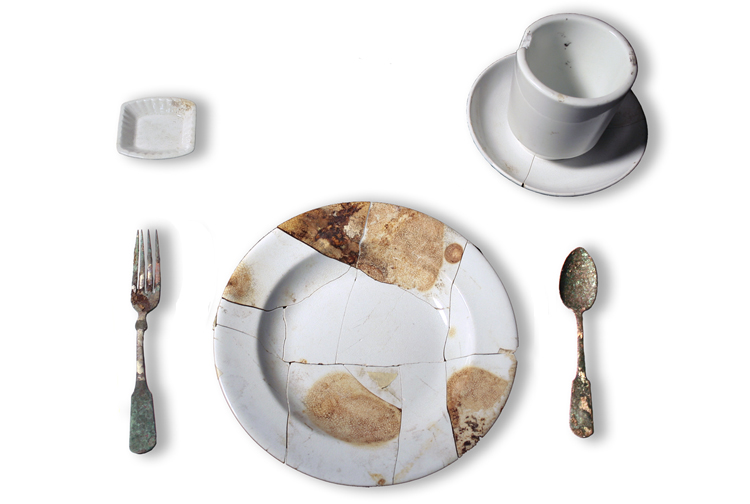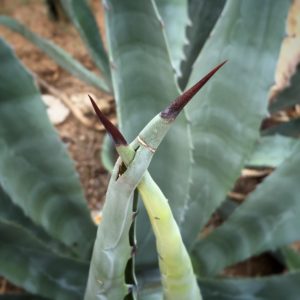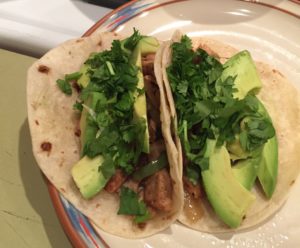
The Benefits of CRM Archaeology: Tucson, History, and Food
R. J. Sliva considers how history and cuisine have intertwined to make Tucson a singular place.
This week, as people celebrate a variety of winter holiday traditions with special foods, we turn our attention to an important question. Why does CRM (cultural resources management) archaeology matter? Your answer may run the gamut from “because it’s fascinating to learn about the past” to “because it’s required by law before my company builds a road,” depending on your perspective. In Tucson, thanks to decades of work along the Santa Cruz River, everyone’s answer now includes “because it leads to economic development and international recognition of our city’s culinary roots.” Grab a bowl of tepary bean stew and settle in for a story of the wonderful things that can happen for a city when historic preservation laws, an interstate highway, a sewage plant, and motivated CRM researchers converge on a fertile floodplain oasis in the middle of the Sonoran Desert.
Visitors to Tucson are often surprised to learn that the Sonoran Desert is one of the most lush and biologically diverse deserts in the world. Archaeological investigations show that people who lived here in the distant past ate a wide variety of desert plants and animals, some of which—including saguaro and prickly pear fruits, prickly pear pads, cholla buds, mesquite pods, and our friend the agave—are still used to this day. At some point, ancient people began growing the familiar Southwestern triumvirate of corn, beans, and squash on the banks of the Santa Cruz River, although they continued to augment their diets with wild plants and meat from rabbits, deer, fish, and birds.

Our friend the agave.
Just over a year ago, the United Nations Educational, Scientific, and Cultural Organization (UNESCO) designated Tucson as a World City of Gastronomy, the first such designation in the United States. The application process was spearheaded by Dr. Jonathan Mabry, who spent more than 15 years as a Desert Archaeology project director before moving to his current post as City of Tucson Historic Preservation Officer and City Archaeologist. During the 1990s, Desert Archaeology teams excavated ancient agricultural sites near the Santa Cruz River under contracts with the Arizona Department of Transportation in preparation for Interstate 10 widening projects. A decade later, subsequent work by Desert and SWCA, Inc., at a nearby Pima County waste water treatment facility (particularly the award-winning Las Capas excavations led by our Jim Vint) built on those early foundations and added substantial information to our knowledge base. This cumulative body of research, required by federal and state historic preservation laws, and funded by federal highway monies and Pima County bonds, revealed an agricultural and culinary history going back at least 4,000 years. This unbroken chain of people living, farming, foraging, hunting, and cooking in Tucson formed the basis of the city’s successful UNESCO application.

Aerial view of an early field system documented by Desert Archaeology at the site of Las Capas, Tucson, Arizona. Photo by Henry Wallace.
Major media outlets are beginning to notice. The New York Times and National Geographic recently published online pieces that celebrate our deep culinary traditions and encourage tourists to visit. This drives traffic not only to the myriad restaurants mentioned in the articles, but to hotels and shopping destinations as well. Better yet, the Times suggests that gastrotourists avoid the Gem Show rush, which will spread their arrivals (and spending) over more lean periods for Tucson businesses. Early indications are promising, and the Tucson City Council already capitalized with a designation of their own, proclaiming a stretch of the city from Grant to Valencia the Best 23 Miles of Mexican Food. We’re not going to argue with that.

Carnitas tacos with avocado and cilantro, Tucson, Arizona.
Tucson is on the world gastronomy map now, thanks in greatest part to its history—the depth of which, quite simply, would not have been revealed if not for CRM work that was mandated by law and carefully planned, executed, and recorded by teams of researchers who recognized the uniqueness of what came out of the ground. We are proud of our roles in both documenting the past of our city and contributing to its future.

